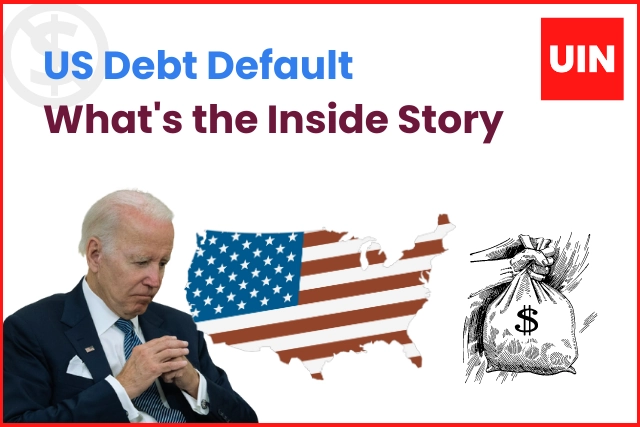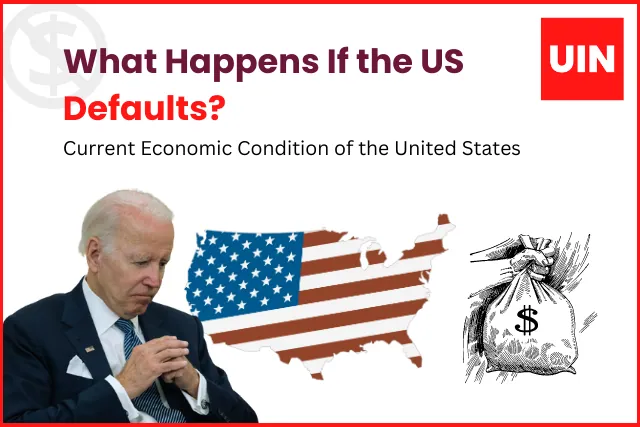Introduction
The United States’ debt has long been a topic of concern and debate, with many wondering about the possibility of a default. A US debt default, if it were to occur, would have far-reaching implications for both the nation and the global economy. In this article, we will explore the concept of a US debt default, analyze the likelihood of such an event, and discuss the potential consequences that would follow.
Understanding US Debt Default
The term “debt default” refers to a situation in which a borrower fails to make scheduled payments on their debt obligations. In the case of the United States, it pertains to the possibility of the US government being unable to meet its financial obligations, particularly the payment of interest and principal on Treasury bonds.
US Debt Levels and the Risk of Default
The United States has accumulated a significant amount of debt over the years, largely due to budget deficits and borrowing to finance government spending. As of the knowledge cutoff in September 2021, the US national debt exceeded $28 trillion. However, it’s important to note that the US government has never defaulted on its debt in its history.
Did the US Default on Its Debt?
As of the knowledge cutoff in September 2021, the United States had not defaulted on its debt. The US Treasury has always made its interest and principal payments on time. However, it is crucial to acknowledge that the possibility of a debt default cannot be entirely ruled out, especially considering the size of the debt and the complex economic factors at play.
Consequences of a US Debt Default
A US debt default would have severe repercussions, both domestically and internationally. Here are some potential consequences:
- Financial Market Turmoil: A US debt default would likely lead to significant volatility in financial markets. Investors would lose confidence in US Treasury bonds, leading to a decline in their value. This could trigger a sell-off, causing a ripple effect throughout the global financial system.
- Increased Borrowing Costs: Following a default, the United States would find it harder and more expensive to borrow money. Lenders would demand higher interest rates to compensate for the increased risk associated with lending to a nation that has defaulted.
- Economic Recession: A default could plunge the United States into an economic recession. Higher borrowing costs would limit the government’s ability to spend, leading to potential cuts in public services and programs. Reduced consumer and business confidence could also dampen economic growth.
- Global Economic Impact: The US dollar plays a crucial role in global trade and as a reserve currency. A debt default would erode trust in the US dollar, potentially leading to a loss of its status as the world’s primary reserve currency. This shift could have far-reaching implications for international trade and financial stability.
Preventing a US Debt Default
To avert a debt default, the US government has several options at its disposal. These include raising the debt ceiling, implementing fiscal reforms to reduce the budget deficit, and promoting economic growth. Additionally, policymakers can explore strategies such as debt restructuring or negotiation with creditors to alleviate the debt burden.
Conclusion
While the United States has not yet defaulted on its debt, the possibility of such an event remains a concern. A US debt default would have profound consequences for the domestic economy and the global financial system. As the world’s largest economy and a key player in international markets, it is crucial for the United States to address its debt challenges through prudent fiscal policies and sustainable economic growth to mitigate the risk of default and maintain its financial credibility.


equilibrado de rotores
Aparatos de equilibrado: clave para el desempeño uniforme y eficiente de las maquinarias.
En el mundo de la avances actual, donde la productividad y la confiabilidad del sistema son de suma relevancia, los equipos de equilibrado tienen un tarea esencial. Estos aparatos adaptados están diseñados para calibrar y asegurar componentes dinámicas, ya sea en dispositivos manufacturera, medios de transporte de movilidad o incluso en equipos domésticos.
Para los profesionales en reparación de sistemas y los ingenieros, operar con aparatos de calibración es crucial para proteger el funcionamiento fluido y confiable de cualquier aparato rotativo. Gracias a estas alternativas avanzadas sofisticadas, es posible minimizar notablemente las sacudidas, el sonido y la carga sobre los rodamientos, prolongando la longevidad de componentes costosos.
También importante es el papel que cumplen los aparatos de balanceo en la servicio al comprador. El ayuda especializado y el mantenimiento continuo aplicando estos aparatos habilitan ofrecer asistencias de óptima nivel, elevando la satisfacción de los consumidores.
Para los propietarios de empresas, la contribución en sistemas de calibración y sensores puede ser importante para incrementar la rendimiento y desempeño de sus equipos. Esto es particularmente importante para los inversores que dirigen medianas y intermedias organizaciones, donde cada punto cuenta.
Además, los equipos de ajuste tienen una gran implementación en el ámbito de la seguridad y el monitoreo de nivel. Facilitan identificar potenciales fallos, evitando intervenciones caras y perjuicios a los aparatos. Incluso, los información extraídos de estos equipos pueden emplearse para optimizar métodos y incrementar la exposición en plataformas de exploración.
Las zonas de aplicación de los equipos de balanceo abarcan múltiples industrias, desde la elaboración de ciclos hasta el seguimiento del medio ambiente. No afecta si se considera de extensas fabricaciones industriales o modestos talleres domésticos, los aparatos de balanceo son necesarios para promover un operación efectivo y libre de interrupciones.
Idyllic Bali Villas on the Beach for Sale
Healing Techniques to Discover Inner Peace and Restore Your Nervous System
emotional balance [url=http://www.youtu.be/i3pdwnkjwng/]holistic health[/url].
Step Into Paradise with a Bali Villa
Enjoy Deeper Sleep with These Techniques
hypnosis [url=https://www.youtu.be/zo0eps2tcs8]anxiety meditation.